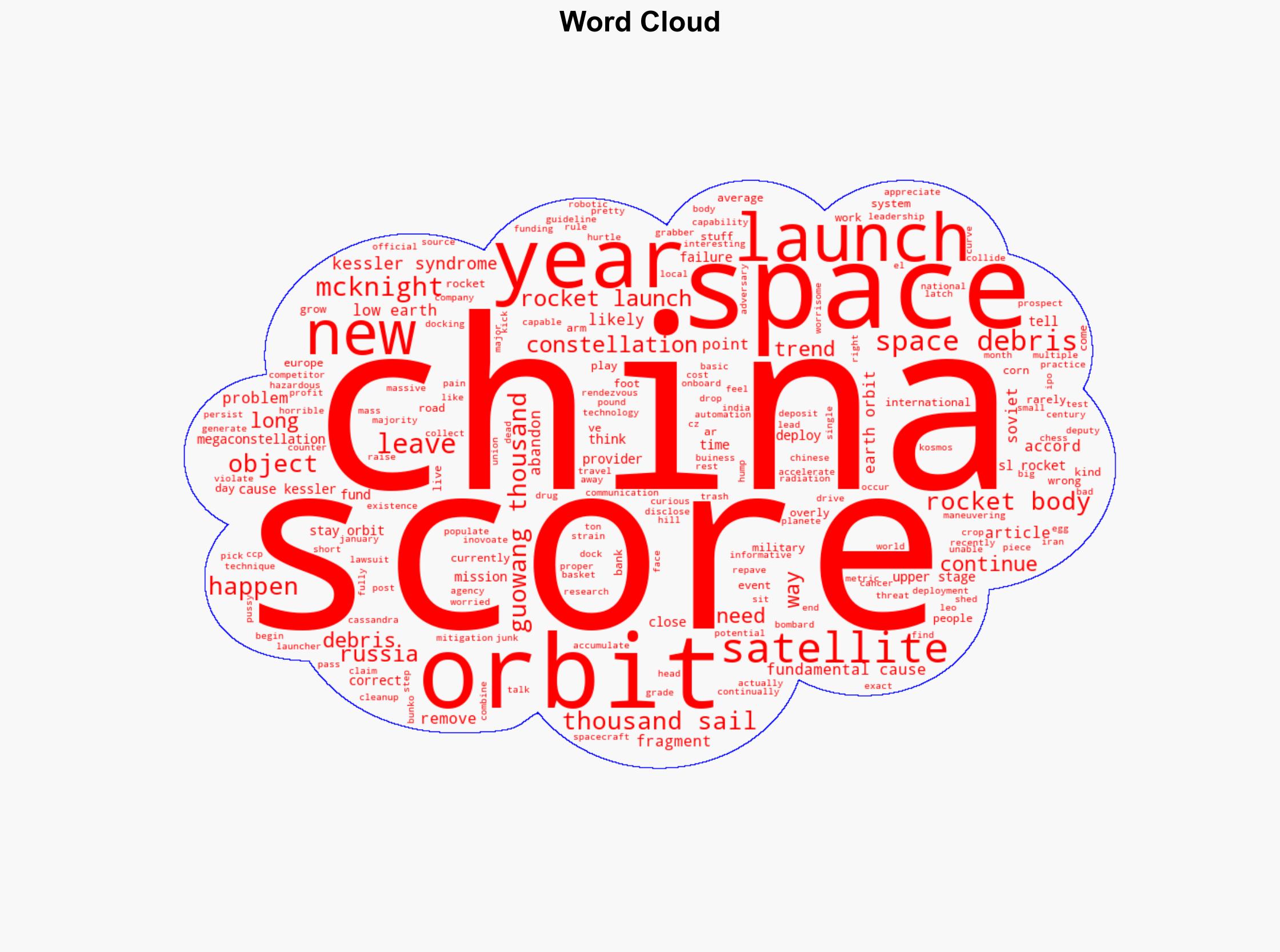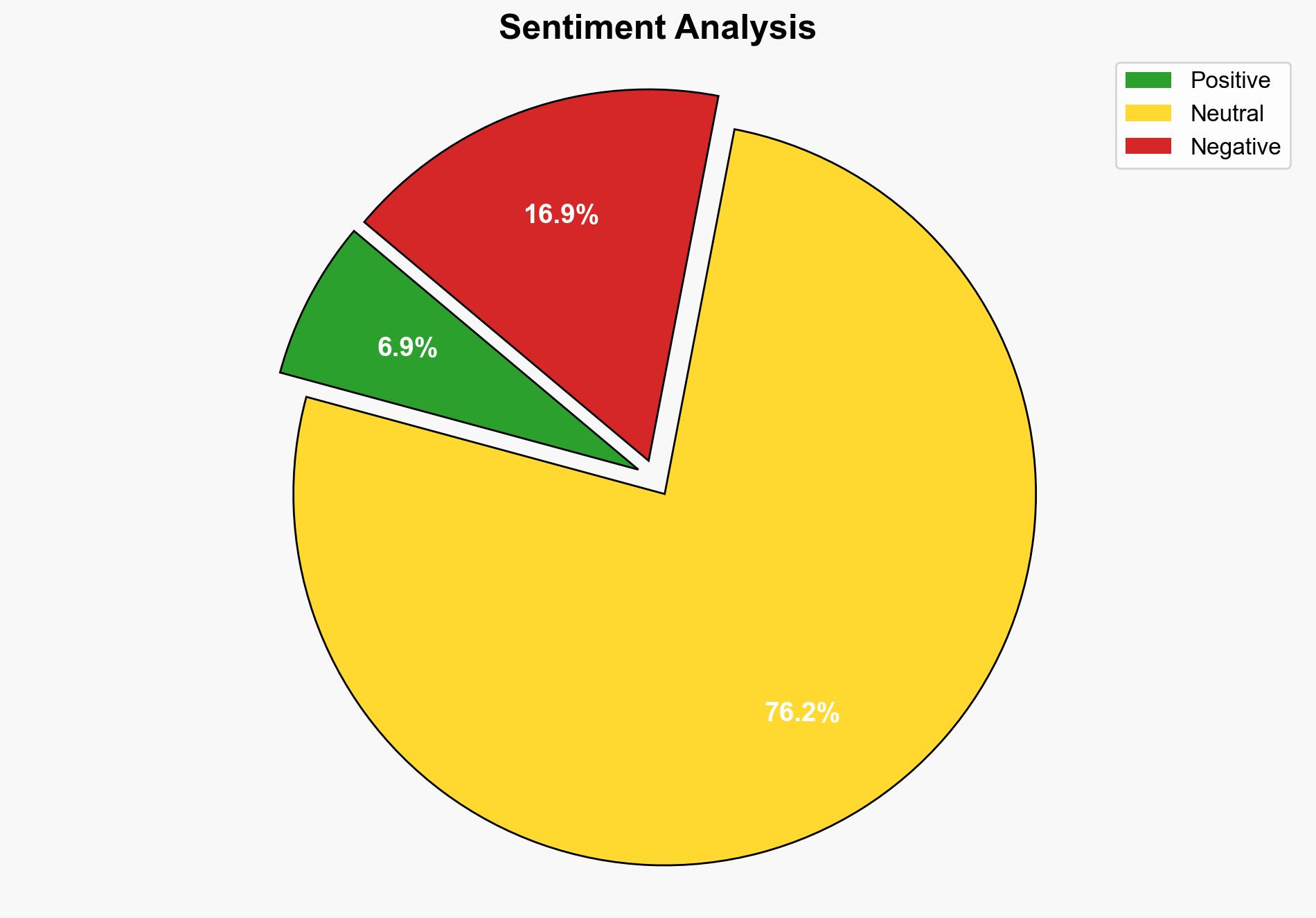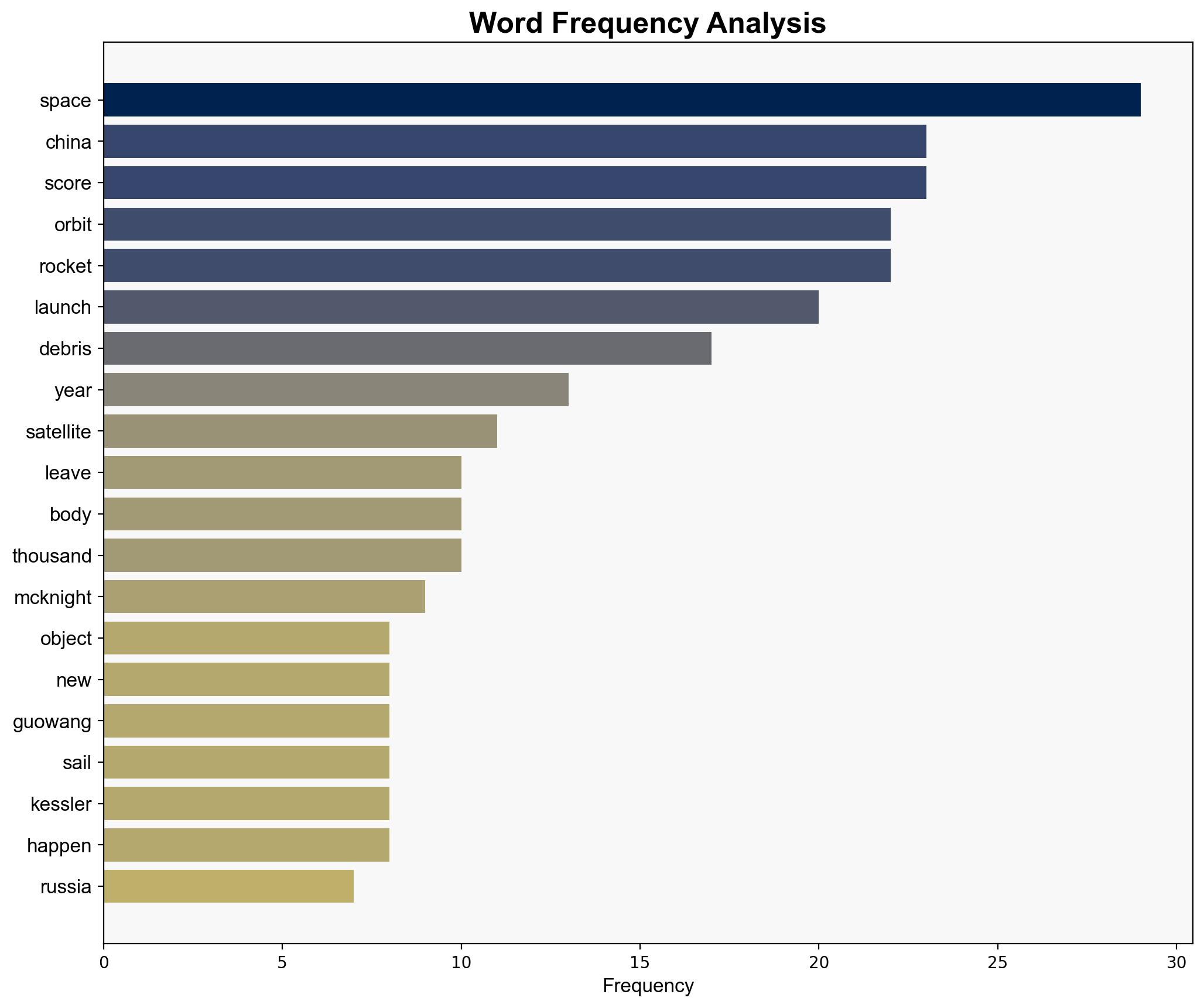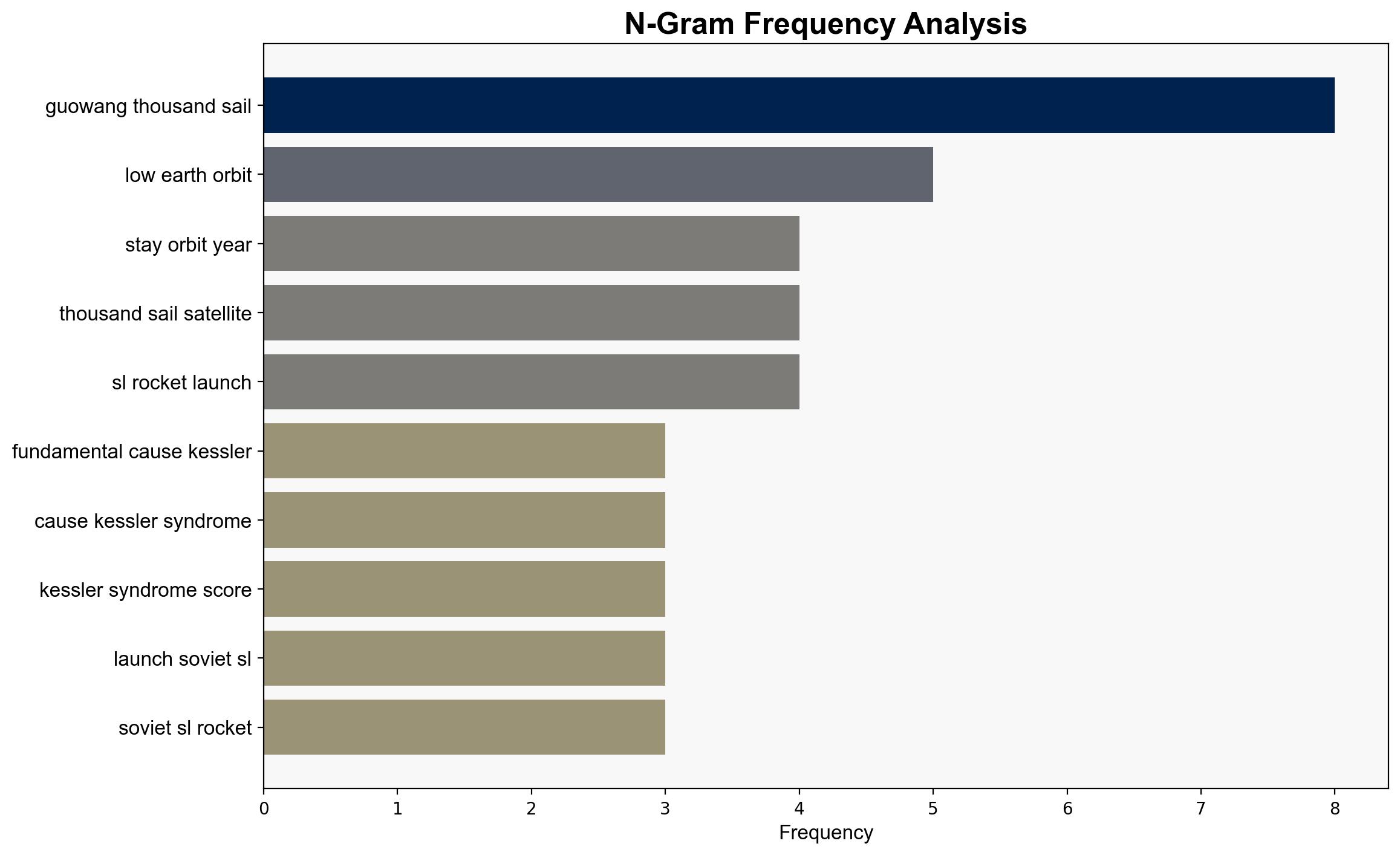Removing 50 Objects from Orbit Would Cut Danger From Space Junk in Half – Slashdot.org
Published on: 2025-10-06
Intelligence Report: Removing 50 Objects from Orbit Would Cut Danger From Space Junk in Half – Slashdot.org
1. BLUF (Bottom Line Up Front)
The most supported hypothesis is that targeted removal of space debris, particularly from past missions, could significantly reduce collision risks in low Earth orbit. This report uses structured analytic techniques to assess the feasibility and strategic implications of debris mitigation efforts. Confidence level: Moderate. Recommended action: International collaboration to prioritize debris removal and enforce compliance with space debris guidelines.
2. Competing Hypotheses
1. **Hypothesis A**: Removing 50 specific objects from orbit, primarily from past missions, will significantly reduce the risk of space debris collisions, as these objects are most likely to fragment and generate further debris.
2. **Hypothesis B**: The removal of 50 objects will have minimal impact on the overall risk due to the continuous addition of new debris from ongoing and future space activities, particularly from countries like China and Russia.
Using Analysis of Competing Hypotheses (ACH), Hypothesis A is better supported by the evidence that identifies specific high-risk objects and their potential to fragment. However, Hypothesis B highlights the ongoing challenge of new debris generation, which could offset the benefits of removal.
3. Key Assumptions and Red Flags
– **Assumptions**: The effectiveness of debris removal assumes that the identified objects are accurately assessed as the most dangerous. It also assumes international cooperation in debris removal efforts.
– **Red Flags**: Lack of transparency regarding the capabilities of new satellite constellations and potential non-compliance with international guidelines by major space-faring nations.
– **Blind Spots**: Potential technological and financial barriers to implementing large-scale debris removal operations.
4. Implications and Strategic Risks
The continued accumulation of space debris poses significant risks to satellite operations, international space cooperation, and economic activities reliant on space-based infrastructure. The deployment of megaconstellations could exacerbate these risks, leading to potential geopolitical tensions over space traffic management and debris mitigation responsibilities.
5. Recommendations and Outlook
- **Concrete Actions**: Advocate for an international treaty focused on space debris mitigation, including mandatory debris removal and compliance with guidelines.
- **Scenario-Based Projections**:
– **Best Case**: Successful international collaboration leads to significant debris reduction and enhanced space safety.
– **Worst Case**: Continued debris accumulation results in a major collision, disrupting critical satellite services.
– **Most Likely**: Incremental progress in debris removal with ongoing challenges from new debris sources.
6. Key Individuals and Entities
Darren McKnight, lead author of the paper presented at the International Astronautical Congress.
7. Thematic Tags
national security threats, space sustainability, international cooperation, space debris mitigation





